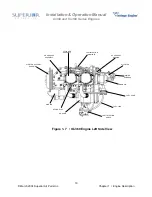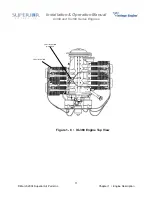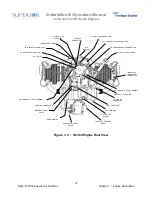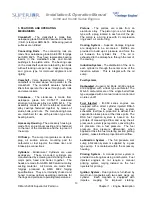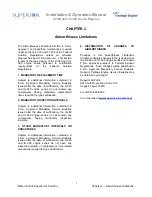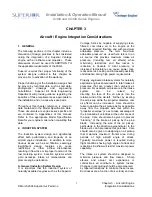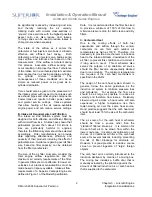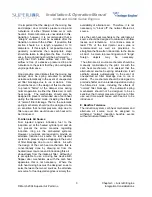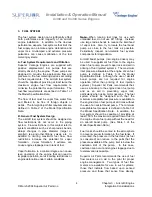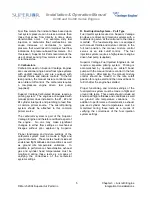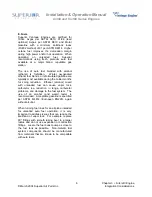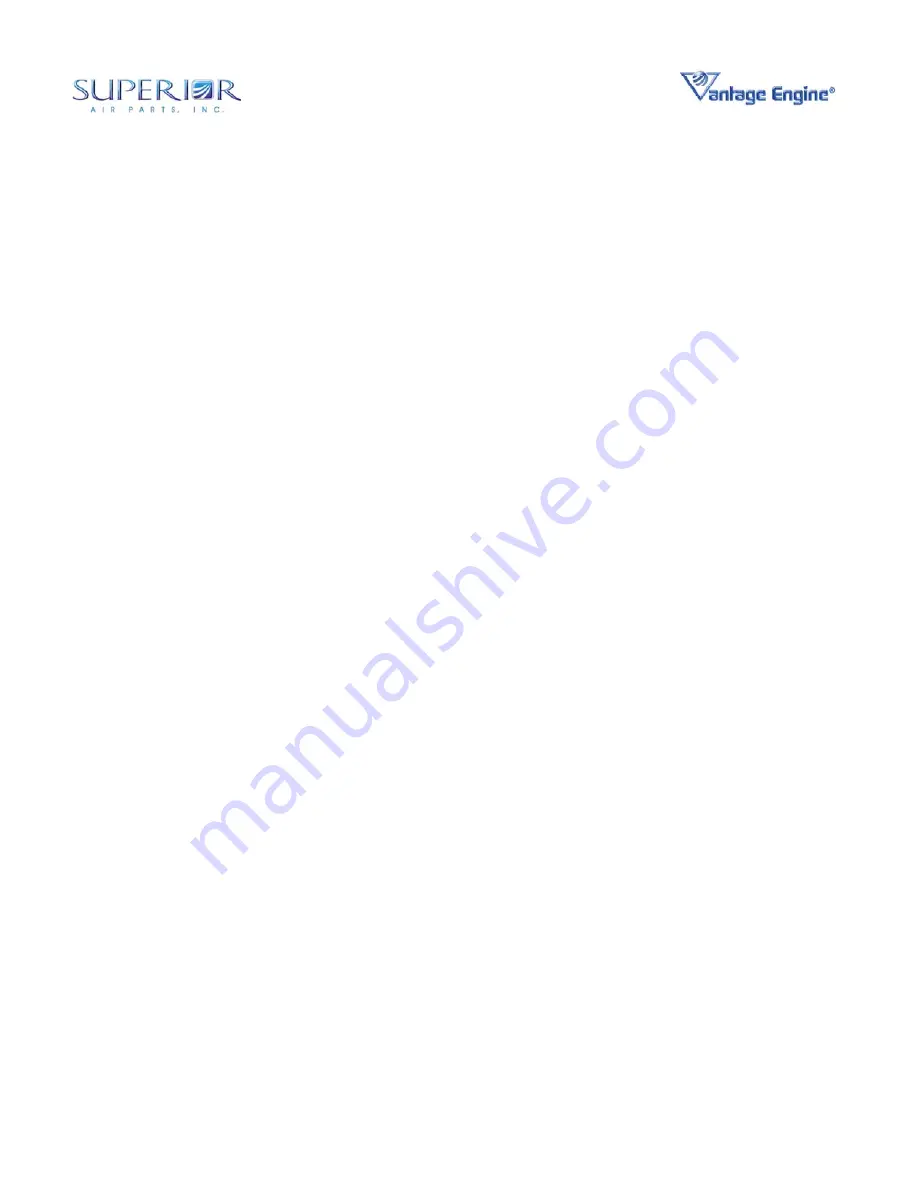
Installation & Operation Manual
O-360 and IO-360 Series Engines
10 Chapter 3 • Aircraft / Engine
© March 2004 Superior Air Parts Inc. Integration Considerations
(1.) Exhaust Pipe Exits
Exhaust exits should be positioned such that the
gasses are released clear of the aircraft and not
allowed to reenter the cabin. Also, the exhaust
exits should be located far enough away from
the aircraft structure to prevent corrosive
byproducts of combustion from causing damage.
Enlarged exit pipes can be used to change the
tone and volume of the exhaust sound. Care
should be taken however not to enlarge the exit
pipes so much as to create sound amplification
as with a megaphone.
(2.) Limit Backpressure
As discussed earlier, high exhaust backpressure
can have detrimental effects on engine
performance. Other than acoustic, pressure
wave effects backpressure can be minimized in
the design by good piping design practices to
limit flow losses. For example, exhaust pipe
size should be kept as large as practicable and
never less than the exhaust port size. Exhaust
pipe lengths, other than being equal for tuning
purposes, should be as short as practicable.
Bends should be “large radius”, smooth and as
few as possible. Pipe intersections should be at
acute angles whenever possible and never at
“large” angles where acoustic waves might be
oriented “backward” up an adjoining pipe.
Whenever possible, collector elements should
be avoided due to their potential to reduce
engine performance. If necessary, collectors
should be designed to eliminate the potential for
acoustic pressure waves to be reflected back
through the exhaust system. This may include
features internal to the collector such as
damping plates, perforated pipes, etc. Such
features necessarily increase flow losses
through the system and therefore increase
exhaust backpressure and care should be taken
to minimize this problem. Also abrupt increases
or decreases in piping size, such as in a
collector, can increase flow losses and should
be avoided.
(3.) Shrouds and Thermal Protection
Exhaust gas temperatures can be as high as
1600
°
F. Therefore, it is sometimes necessary to
shield thermally sensitive components. Control
cables, hoses, engine isolator components,
nose gear tires, etc should be either located far
enough from the exhaust pipes to not be
damaged by the heat, insulated or shielded.
Fuel lines should be insulated as appropriate to
prevent safety concerns or vaporization of the
fuel within the lines. Similar care should be
given to oil or hydraulic lines. Also, intake air
system components including carburetors and
fuel injector servo bodies should be shielded
either by distance or material from exhaust
system heat.
(4.) Exhaust System Support
The exhaust system should be supported in
such a way as to prevent vibration and thermal
growth from imparting stress on the pipes. The
exhaust system should be “hard mounted” to the
cylinder head using the studs provided at the
exhaust port and should have flexible mounts at
or near the exit. Interim supports, if needed
should be of a flexible style.
(5.) Joint Design
The exhaust system should be designed for
ease of installation and also to provide flexibility
for thermal growth during operation. Multiple
piece exhaust systems are preferable to single
piece designs for both of these reasons. Care
should be given to the location of slip joints in
the exhaust system so that their placement does
not interfere with preferred locations for cabin
heat muffs and also to provide for thermal
growth between hot and cold sections. For
example, large sections that are welded together
without slip joints to allow for thermal variations
can cause stresses in the system that can lead
to early failure. The number of welded and slip
joints should be minimized to limit the potential
for exhaust leaks. Also, welds should be of
superior quality to prevent metallurgical or
fatigue failure and subsequent exhaust leaks.

